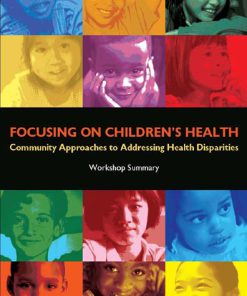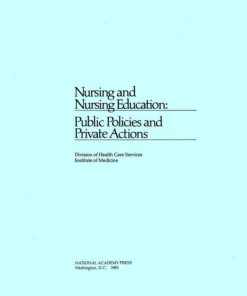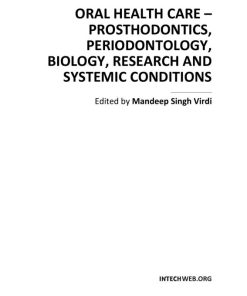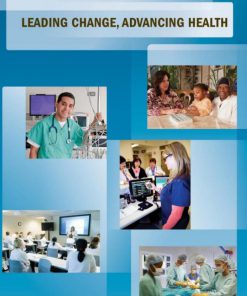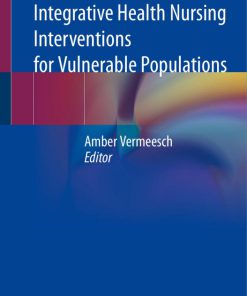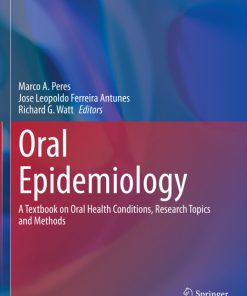Improving Access to Oral Health Care for Vulnerable and Underserved Populations 1st Edition by National Research Council, Institute of Medicine, Board on Health Care Services, Families Board on Children, Youth, Committee on Oral Health Access to Services ISBN 0309209463 9780309209465
$50.00 Original price was: $50.00.$25.00Current price is: $25.00.
Authors:National Academies Press; 1 edition (December 22, 2011) , Author sort:edition, National Academies Press; 1 , Published:Published:Jul 2011
Improving Access to Oral Health Care for Vulnerable and Underserved Populations 1st Edition by National Research Council, Institute of Medicine, Board on Health Care Services, Families Board on Children, Youth, Committee on Oral Health Access to Services – Ebook PDF Instant Download/Delivery. 0309209463, 9780309209465
Full download Improving Access to Oral Health Care for Vulnerable and Underserved Populations 1st Edition after payment

Product details:
ISBN 10: 0309209463
ISBN 13: 9780309209465
Author: National Research Council, Institute of Medicine, Board on Health Care Services, Families Board on Children, Youth, Committee on Oral Health Access to Services
Access to oral health care is essential to promoting and maintaining overall health and well-being, yet only half of the population visits a dentist each year. Poor and minority children are less likely to have access to oral health care than are their nonpoor and nonminority peers. Older adults, people who live in rural areas, and disabled individuals, uniformly confront access barriers, regardless of their financial resources. The consequences of these disparities in access to oral health care can lead to a number of conditions including malnutrition, childhood speech problems, infections, diabetes, heart disease, and premature births.
Improving Access to Oral Health Care for Vulnerable and Underserved Populations examines the scope and consequences of inadequate access to oral health services in the United States and recommends ways to combat the economic, structural, geographic, and cultural factors that prevent access to regular, quality care. The report suggests changing funding and reimbursement for dental care; expanding the oral health work force by training doctors, nurses, and other nondental professionals to recognize risk for oral diseases; and revamping regulatory, educational, and administrative practices. It also recommends changes to incorporate oral health care into overall health care. These recommendations support the creation of a diverse workforce that is competent, compensated, and authorized to serve vulnerable and underserved populations across the life cycle.
The recommendations provided in Improving Access to Oral Health Care for Vulnerable and Underserved Populations will help direct the efforts of federal, state, and local government agencies; policy makers; health professionals in all fields; private and public health organizations; licensing and accreditation bodies; educational institutions; health care researchers; and philanthropic and advocacy organizations.
Improving Access to Oral Health Care for Vulnerable and Underserved Populations 1st Table of contents:
Chapter 1: Introduction to Oral Health Disparities
- 1.1 Defining Vulnerable and Underserved Populations
- 1.2 The Importance of Oral Health in Overall Health
- 1.3 Overview of Barriers to Accessing Oral Health Care
- 1.4 Health Disparities in Oral Health
Chapter 2: Socioeconomic and Cultural Determinants of Oral Health
- 2.1 Socioeconomic Status and Its Impact on Oral Health
- 2.2 Cultural Beliefs and Practices in Oral Health Care
- 2.3 Health Literacy and its Role in Oral Health Disparities
- 2.4 Stigma and Discrimination in Access to Care
Chapter 3: Access to Oral Health Care: The Challenges
- 3.1 Geographic Barriers: Rural and Urban Underserved Areas
- 3.2 Financial Barriers: Cost of Care and Insurance Limitations
- 3.3 Workforce Shortages and Distribution Issues
- 3.4 Language and Communication Barriers
- 3.5 Transportation and Time Constraints
Chapter 4: Policy and Legislative Framework for Oral Health Care
- 4.1 Overview of National and Local Policies Affecting Oral Health Care
- 4.2 The Role of Medicaid and Medicare in Oral Health Access
- 4.3 Dental Care in Community Health Centers
- 4.4 State and Federal Efforts to Address Oral Health Disparities
- 4.5 Legal and Regulatory Barriers to Expanding Access
Chapter 5: Innovative Models for Improving Access to Oral Health Care
- 5.1 Teledentistry and Virtual Care
- 5.2 Mobile Dental Clinics and Outreach Programs
- 5.3 Community-Based Care Models
- 5.4 Integrating Oral Health into Primary Health Care Settings
- 5.5 School-Based Dental Programs
Chapter 6: The Role of Dental Hygienists and Other Dental Professionals
- 6.1 Expanding the Role of Dental Hygienists in Underserved Areas
- 6.2 Task Shifting and Mid-Level Dental Providers
- 6.3 Collaborative Care Models in Oral Health
- 6.4 Training and Continuing Education for Dental Professionals Working with Vulnerable Populations
Chapter 7: Public Health Approaches to Improving Oral Health Access
- 7.1 Public Health Campaigns to Increase Awareness
- 7.2 Fluoride and Preventive Measures in Underserved Areas
- 7.3 Community-Based Oral Health Promotion Programs
- 7.4 Partnerships Between Public Health and the Private Sector
- 7.5 Evaluating Public Health Interventions for Oral Health Access
Chapter 8: Oral Health Care in Special Populations
- 8.1 Oral Health Care for Children and Adolescents
- 8.2 Oral Health Care for Older Adults
- 8.3 Oral Health for Individuals with Disabilities
- 8.4 Care for Immigrants and Refugees
- 8.5 Addressing the Needs of Homeless Populations
Chapter 9: Global Perspectives on Improving Oral Health Access
- 9.1 Oral Health in Low- and Middle-Income Countries
- 9.2 International Efforts to Reduce Oral Health Disparities
- 9.3 Lessons Learned from Global Initiatives
- 9.4 Sustainable Models for Oral Health Access Worldwide
Chapter 10: The Future of Oral Health Care Access
- 10.1 Emerging Trends in Oral Health Care Delivery
- 10.2 Technological Innovations and Their Impact on Access
- 10.3 Advocacy and Policy Change for Improved Access
- 10.4 Collaborative Approaches to Addressing Oral Health Disparities
- 10.5 Ensuring Sustainability in Oral Health Programs
People also search for Improving Access to Oral Health Care for Vulnerable and Underserved Populations 1st:
vulnerable and underserved populations
serving vulnerable and underserved populations
what are the vulnerable populations
examples of vulnerable populations
vulnerable and underserved




